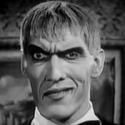The biggest factor in trigger control is ones ability to work the trigger while maintaining an acceptable sight picture. What does it take to accomplish that? Probably 90% mental effort and 10% technique. The 10% part boils down to learning to isolate/separate the trigger finger movement from within the grip by applying the proper amount of grip friction with the least amount of tension possible and let your kinesthetic stance or position absorb recoil vs a crush grip that creates too much tension that connects/transfers the trigger finger movement into your entire grip package (hands, wrists, forearms, muzzle).



 Reply With Quote
Reply With Quote




